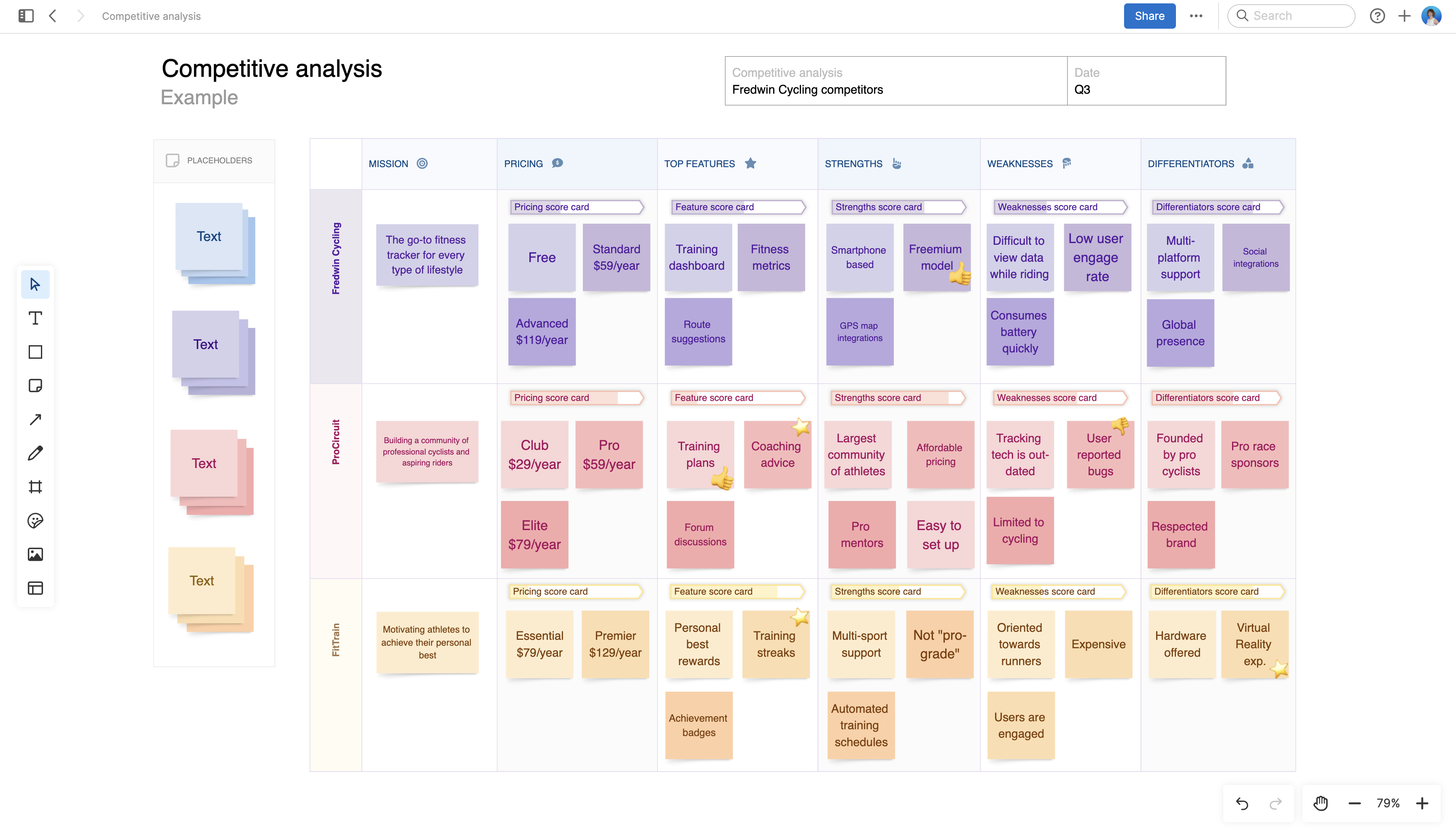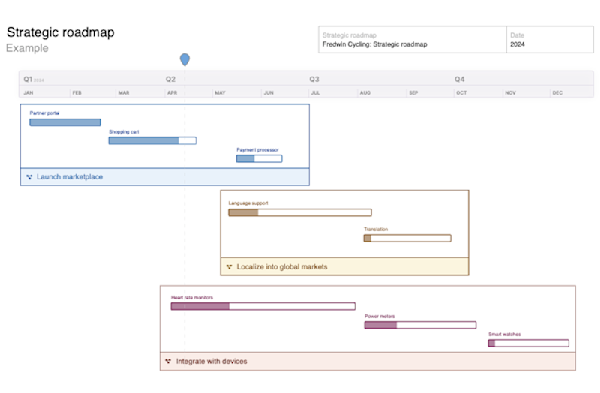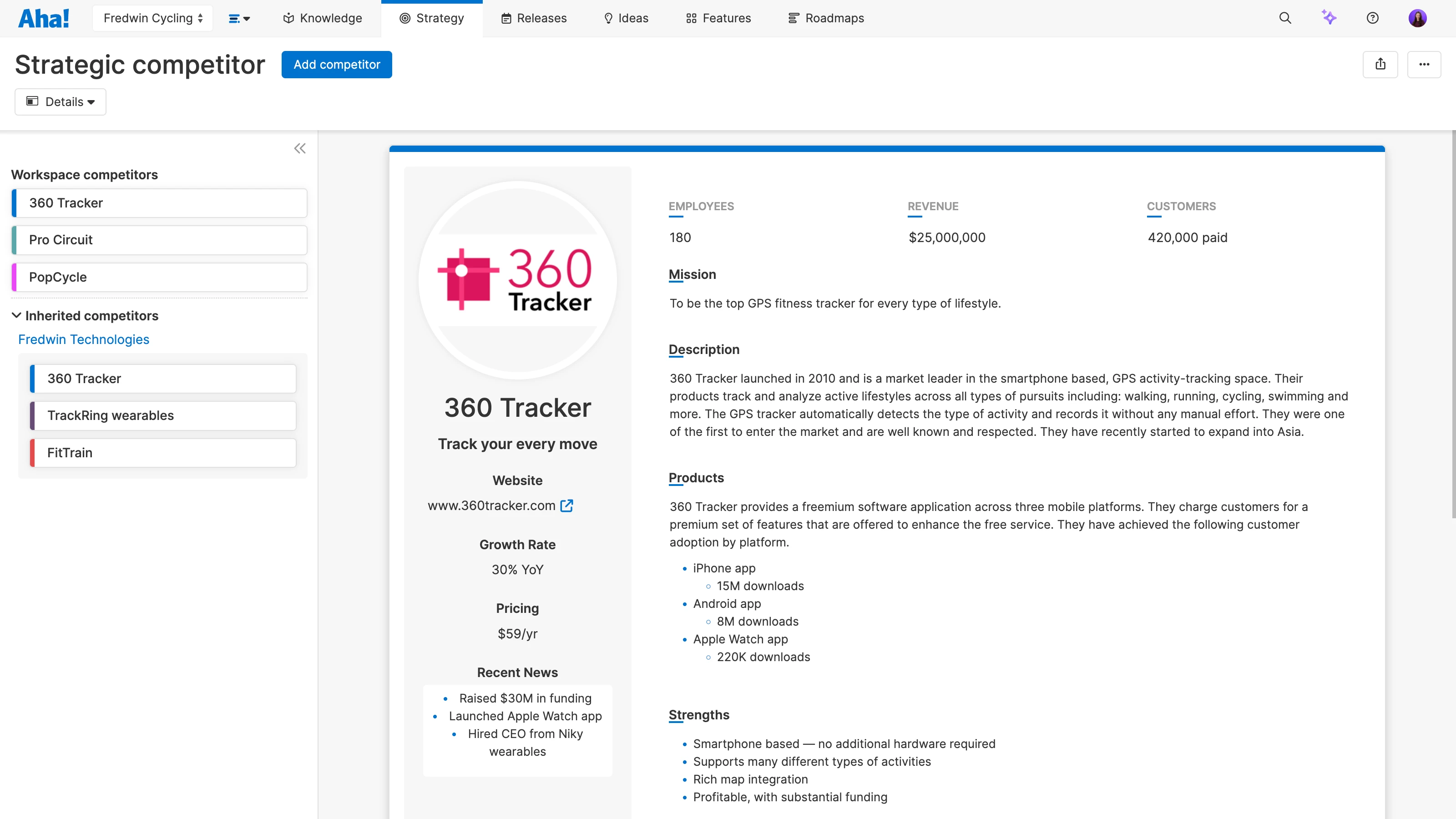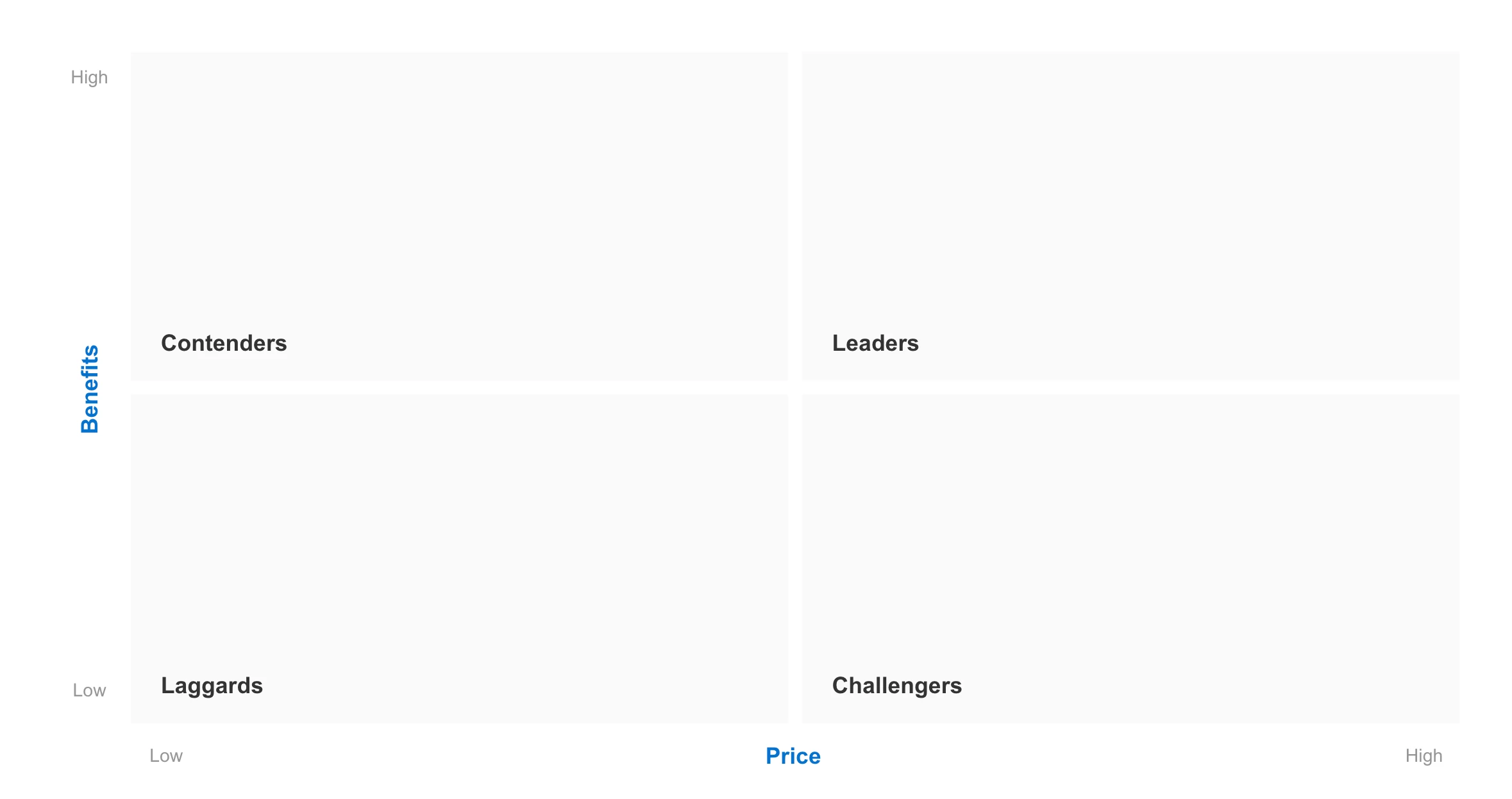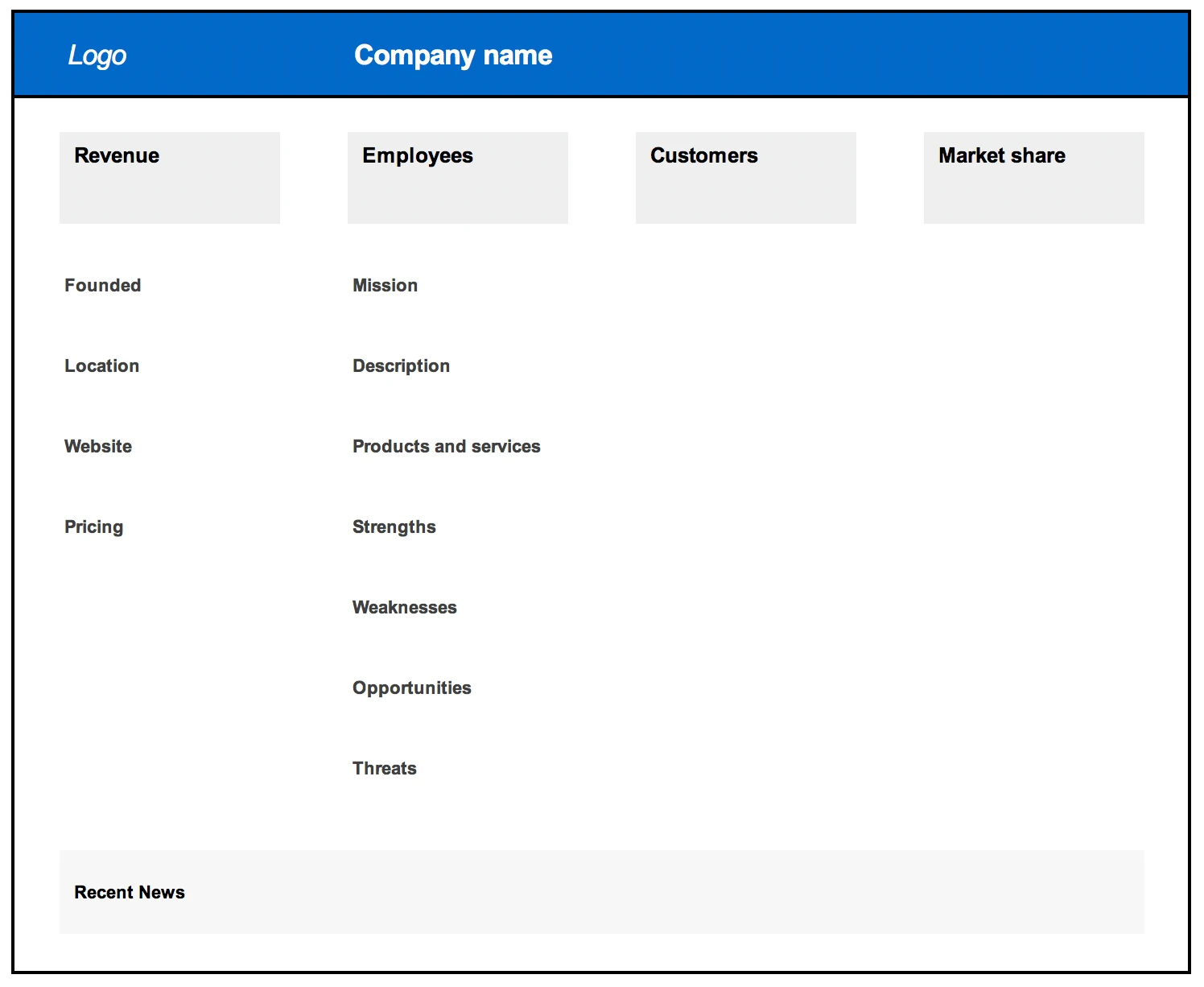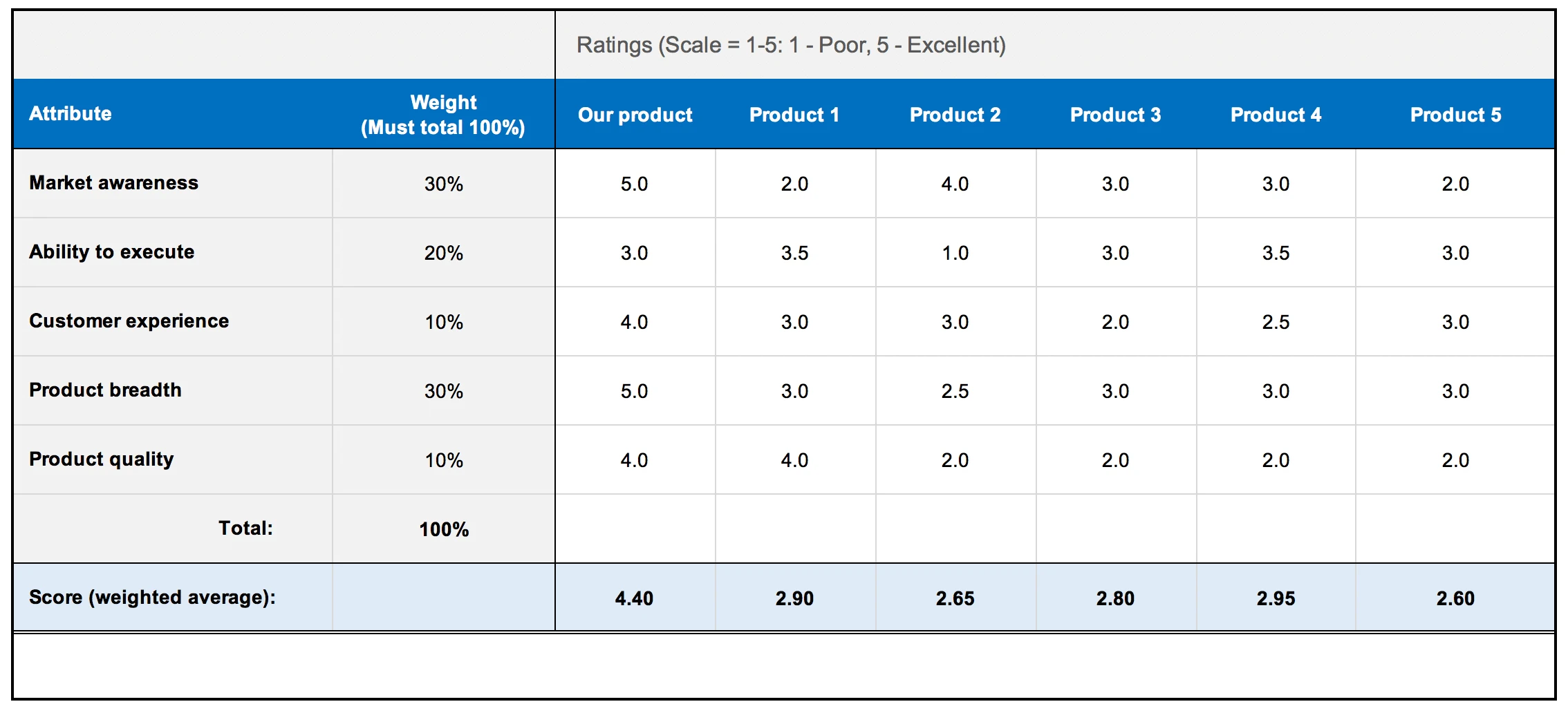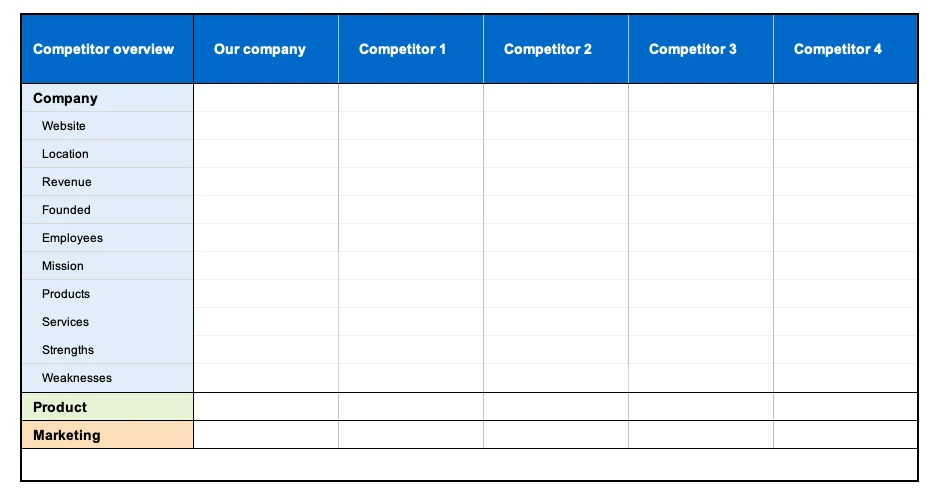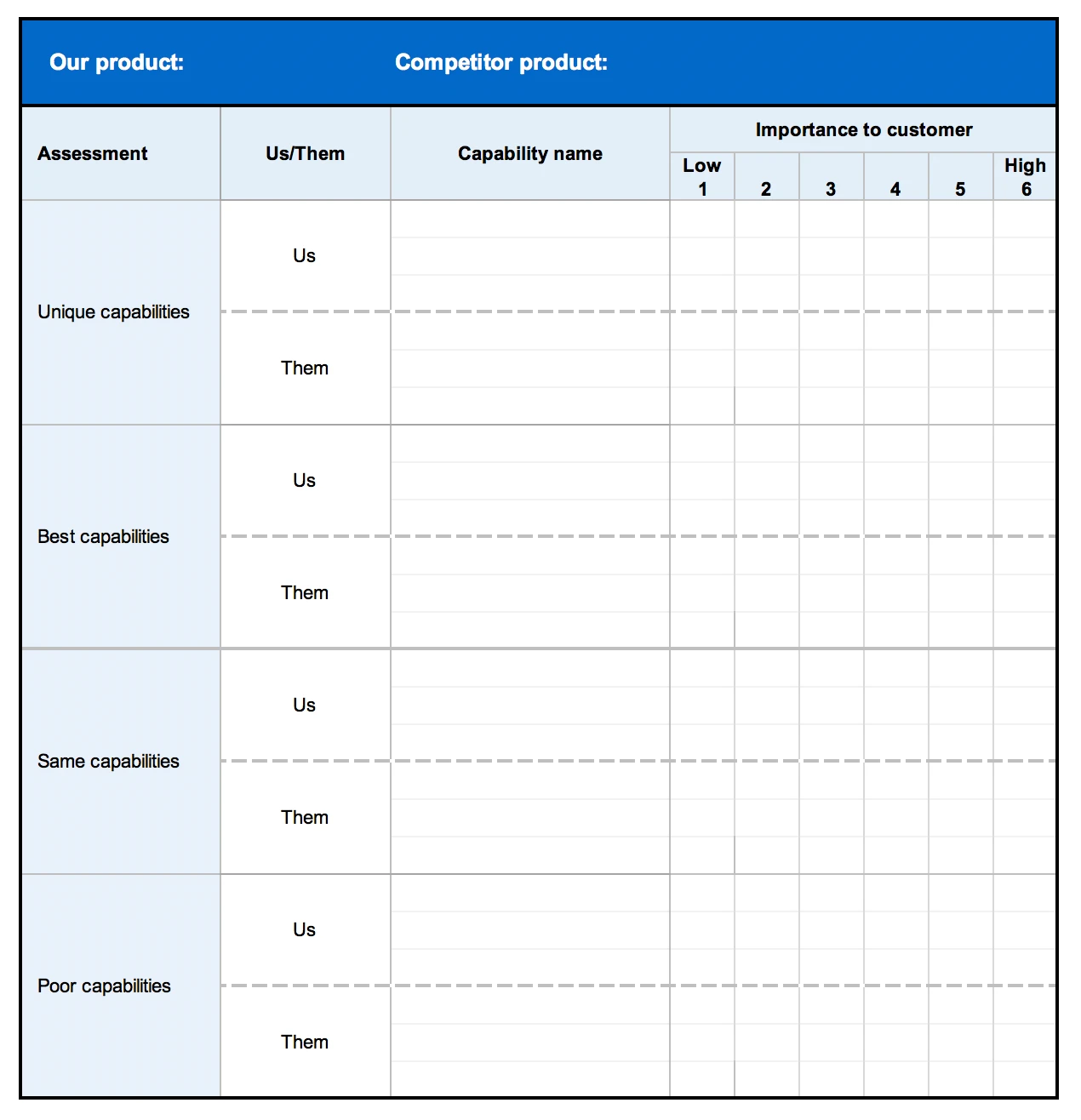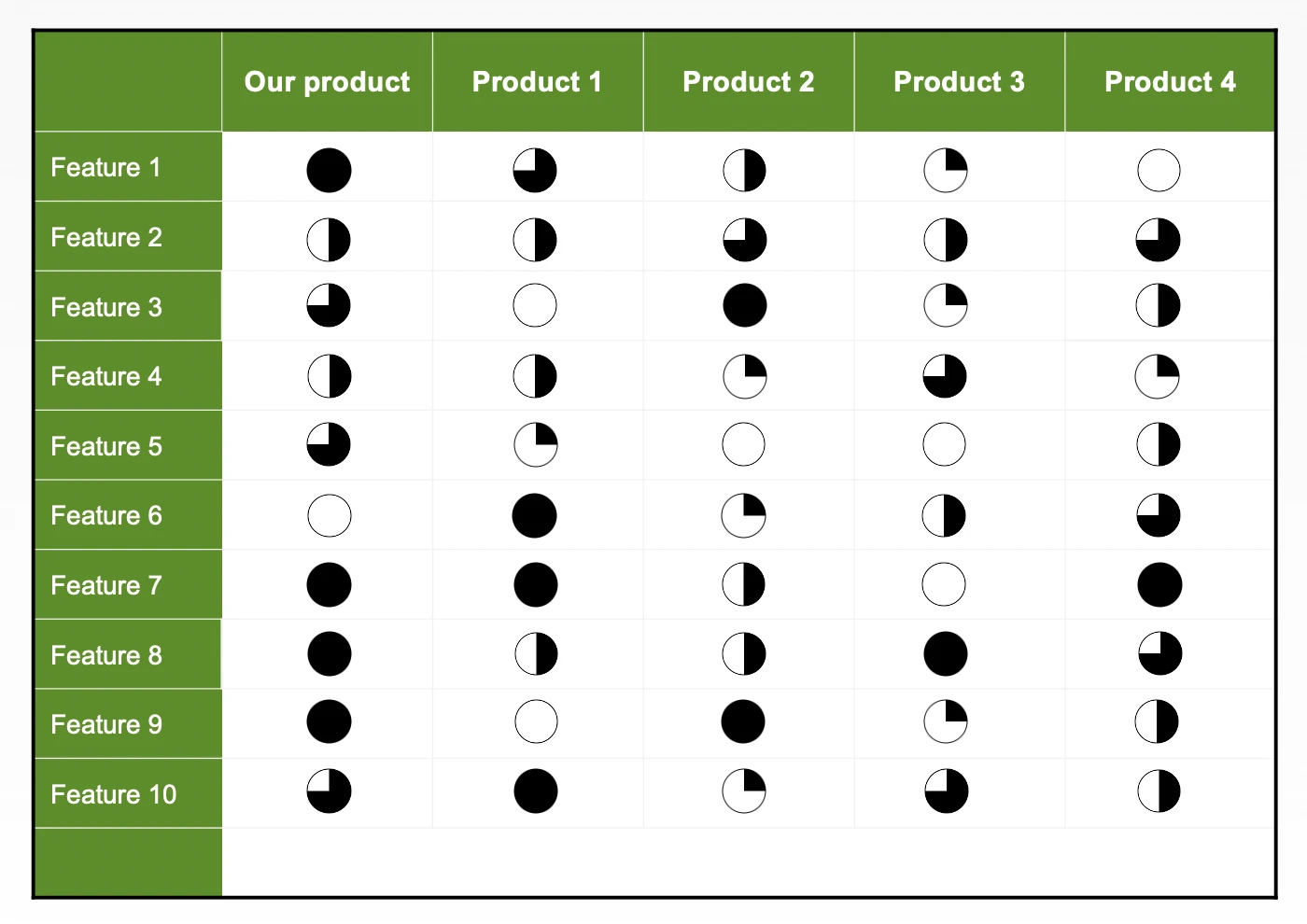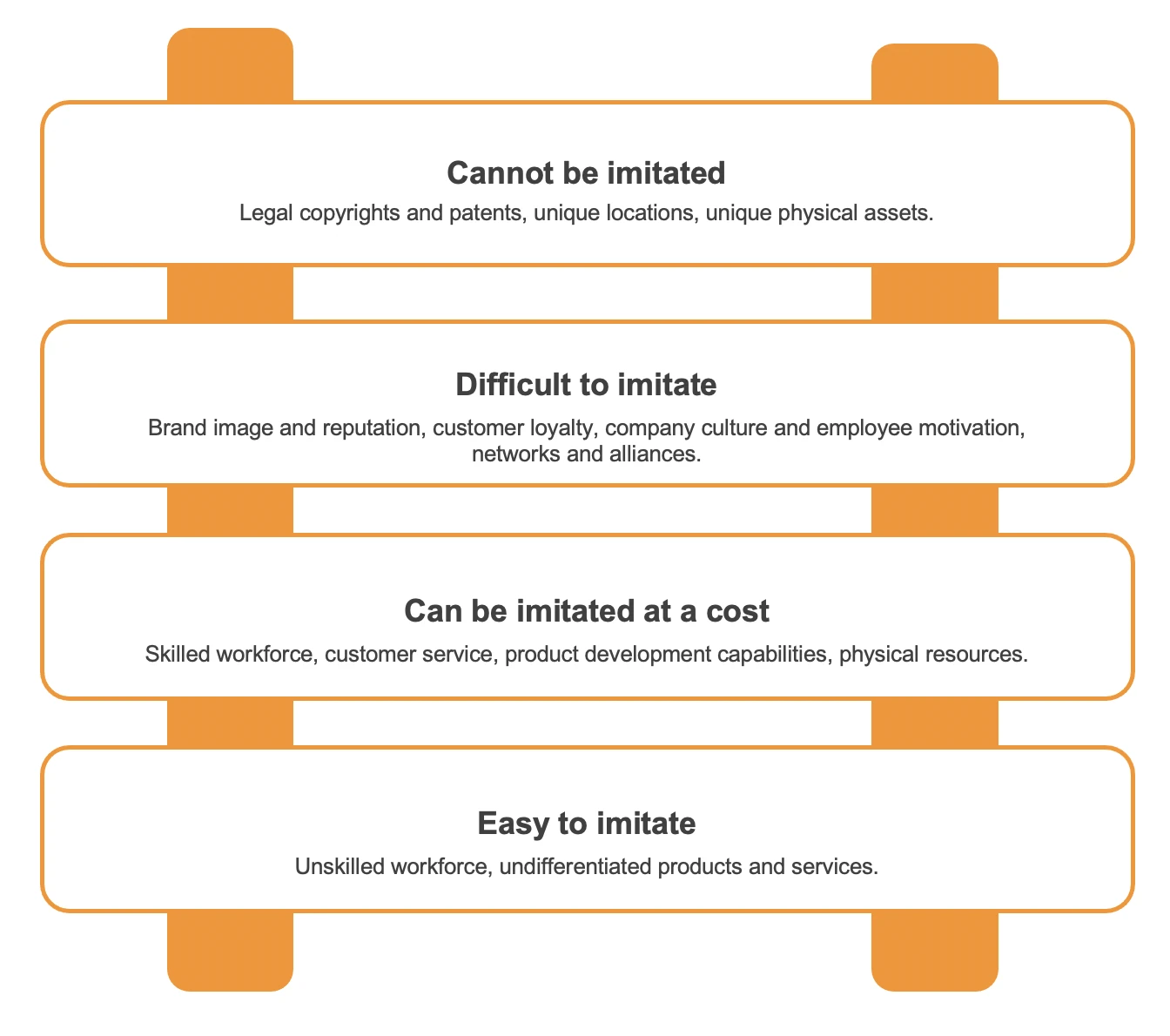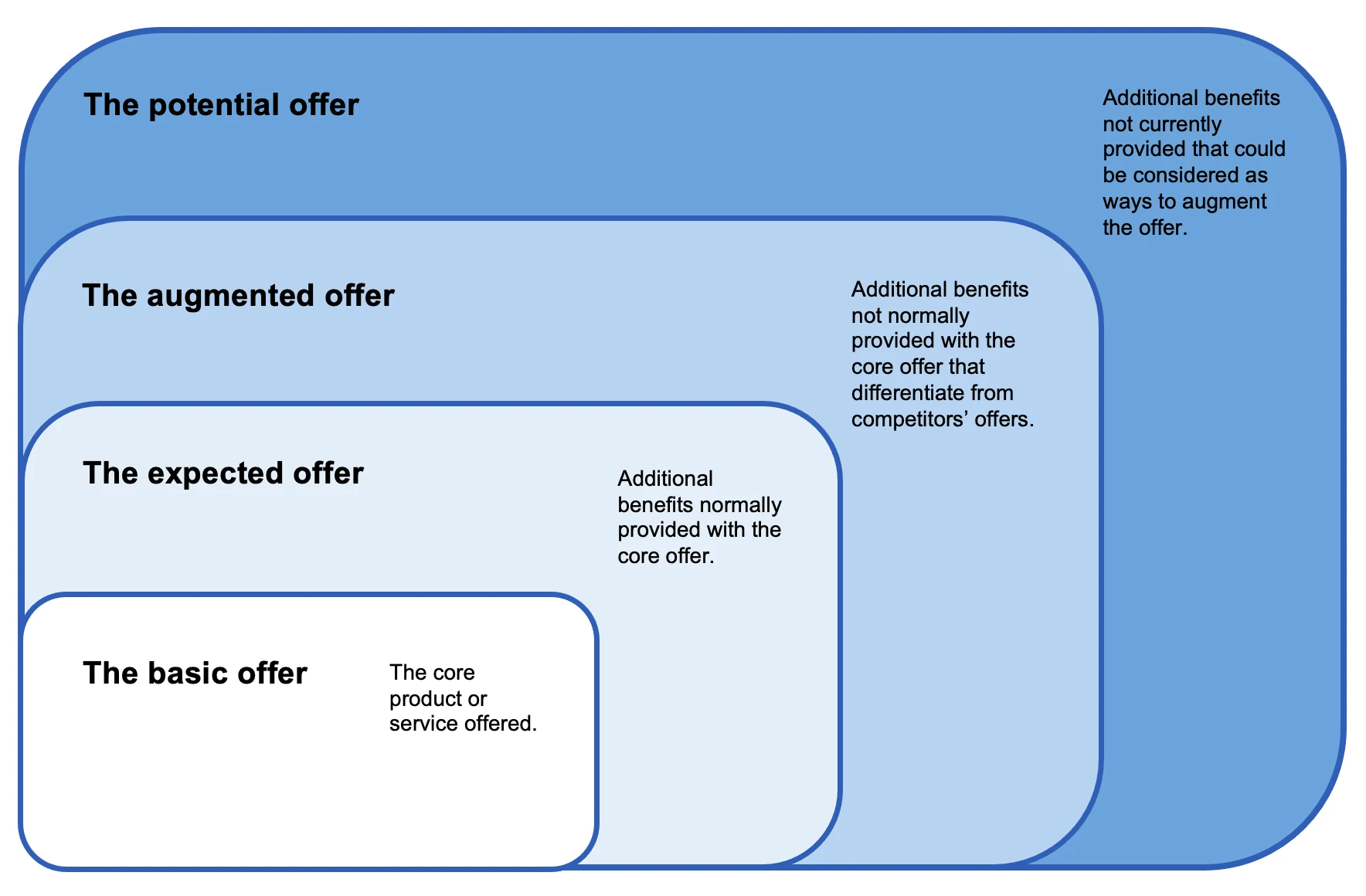This guide includes free Excel and PowerPoint templates to help you organize and share your competitive research. But even though these templates are a great starting point, they require manual updates and often feel disconnected from daily work. For quicker collaboration, try a whiteboard template from the Aha! template library. And if you are ready to go deeper (think: building product roadmaps, defining go-to-market strategies, and prioritizing features) Aha! Roadmaps is the ultimate tool.
Now, let's break down what a competitive analysis is, how to conduct one, and how to make the most of these templates. Jump ahead using any of the links below:
What is a competitive analysis?
A competitive analysis is a useful tool for understanding the market landscape and how your product compares to others. It helps you uncover how prospective customers might solve their problems with alternative solutions and what other companies are doing to win over target buyers. By evaluating competitors' strategies, strengths, and weaknesses, you can gain valuable insights to shape your own approach.
Your competitive analysis should answer these core questions:
Who are the other companies vying for customers in your market?
What products and services do they offer?
What is each competitor's market share?
What are their strengths and weaknesses?
How do your own products and services compare?
How can you differentiate your offering?
Product and marketing teams use these findings to inform their strategic plans and determine what will make their product stand out. With a solid understanding of the competition, you can focus on delivering the most compelling value to your customers.
Competitor insights should guide, not lead
Done well, competitive research will become an integral piece of your product planning process. But it is important to note that competitors should only help inform your product's trajectory, not dictate it. Instead of making decisions about your product based only on getting ahead of the competition, use your research in conjunction with what you know is best for your customers and your company. What your customers want and need is your top priority — this is what will ultimately help you deliver a lovable product.
